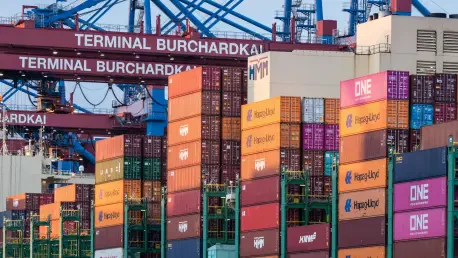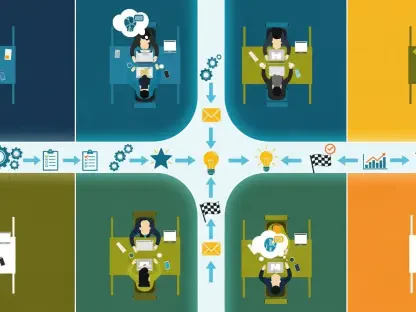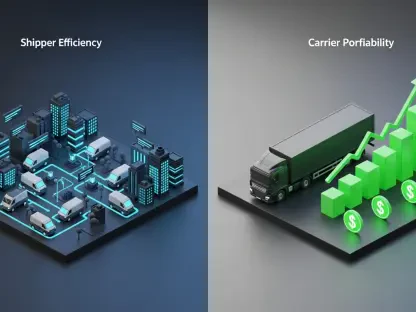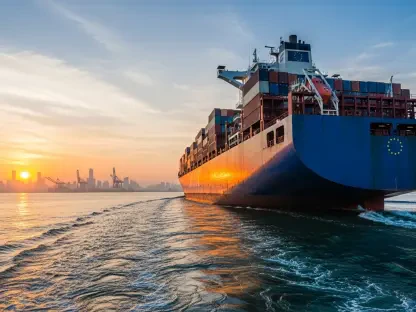Imagine a sport where cutting-edge speed meets an equally relentless drive for sustainability, slashing carbon emissions without sacrificing performance. Formula One, often hailed as the pinnacle of motorsport, is undergoing a transformative shift with the adoption of HVO100 biofuel, a renewable energy solution powering the logistics of top teams like Mercedes-AMG PETRONAS F1. This technology, integrated into the heart of high-stakes racing operations, offers a glimpse into how even the most performance-driven industries can pivot toward environmental responsibility. The pressing challenge lies in balancing competitive excellence with ambitious Net Zero goals, and HVO100 stands as a critical piece of this puzzle.
Unpacking the Technology Behind HVO100
HVO100, or Hydrotreated Vegetable Oil, represents a second-generation biofuel crafted from renewable sources such as vegetable oils and waste fats. Unlike traditional diesel, its chemical structure allows seamless compatibility with internal combustion engine trucks, ensuring no compromise in power or efficiency. This composition not only reduces dependency on fossil fuels but also delivers a cleaner burn, making it a standout option for heavy-duty logistics in demanding environments like F1.
The environmental benefits of this biofuel are striking, with studies showing a substantial drop in CO2 emissions compared to conventional diesel—often by as much as 90% over the fuel’s lifecycle. This reduction is achieved without requiring major modifications to existing engine systems, a factor that eases its adoption across fleets. For an industry under scrutiny for its carbon footprint, such advantages position HVO100 as a practical yet impactful innovation.
Beyond emissions, the technology supports a circular economy by utilizing waste materials as feedstock, minimizing the strain on agricultural resources. While not a complete solution to decarbonization, it serves as a bridge between current infrastructure and future electric or hydrogen-based systems. The ability to integrate with existing logistics frameworks makes it particularly appealing for rapid deployment in high-intensity operations.
Performance in the Fast Lane of F1 Logistics
In the high-octane world of Formula One, logistics are as critical as race-day strategy, and the Mercedes-AMG PETRONAS F1 Team has leveraged HVO100 to power 99% of its European race and marketing truck operations in 2025. This biofuel fuels the transport of vital equipment and materials to race locations across the continent, ensuring timely deliveries while slashing emissions. The scale of implementation highlights how renewable fuels can handle the rigorous demands of a global sport.
Since adopting HVO100 through a pilot program starting three years ago, the team has achieved a remarkable reduction of over 1,190 tons of CO2 equivalent in emissions across European operations. This measurable impact stems from a strategic partnership with PETRONAS and logistics suppliers, who have prioritized sustainable fuel integration. Such results underscore the technology’s reliability in real-world, high-pressure scenarios.
A notable test case involved the Mercedes-Benz Trucks eActros 600, an electric vehicle used alongside HVO100-powered trucks for long-distance hauls, such as a 673-kilometer journey from Brackley, UK, to Zandvoort. This trial demonstrated up to 80% lifecycle CO2e emission reductions compared to diesel counterparts, showcasing how biofuels can complement emerging electric solutions. The synergy of these technologies points to a scalable model for greener race logistics.
Challenges on the Road to Wider Adoption
Despite its successes, scaling HVO100 beyond Europe presents significant hurdles, primarily due to limited supply chains for renewable fuels in other regions. Many global race locations lack the infrastructure to produce or distribute this biofuel at the necessary volume, creating logistical bottlenecks. Addressing this gap requires coordinated investment in production facilities and distribution networks.
Regulatory inconsistencies also pose a barrier, as varying fuel standards and policies across countries can complicate international deployment. Harmonizing these regulations will be essential to ensure that teams can rely on consistent fuel quality and availability during global events. Without such alignment, the risk of operational disruptions remains a concern.
Efforts are underway to tackle these challenges, including plans to expand electric vehicle fleets and enhance biofuel accessibility through strategic partnerships. The Mercedes-AMG PETRONAS F1 Team is actively exploring hybrid solutions to bridge current limitations, aiming for a seamless transition to sustainable logistics worldwide. These initiatives signal a proactive approach to overcoming structural obstacles in the coming years.
Industry-Wide Shifts and Sustainability Trends
Formula One has earned its reputation as the world’s fastest test lab for green technologies, with sustainability now a core focus across the sport. Teams are increasingly aligning with Net Zero ambitions, and Mercedes-AMG PETRONAS F1 leads the charge with clear targets for total Race Team Control by 2030 and across all scopes by 2040. This commitment reflects a broader industry trend toward accountability in environmental impact.
The integration of HVO100 is just one facet of a larger movement that includes innovations like electric vehicle fleets and advanced energy management systems. These developments are not merely reactive but aim to set benchmarks for other sports and industries. The sport’s visibility offers a unique platform to demonstrate how cutting-edge solutions can be both practical and transformative.
Collaboration plays a pivotal role in this evolution, as seen in the partnerships driving biofuel adoption and electric truck testing. By sharing insights and technologies, F1 teams can accelerate the pace of change, influencing sectors far beyond motorsport. This collective push toward sustainability amplifies the potential for systemic impact on a global scale.
Looking Ahead to a Greener Grid
Reflecting on the journey, the Mercedes-AMG PETRONAS F1 Team made groundbreaking strides by embedding HVO100 biofuel into 99% of its European logistics operations, achieving substantial emission cuts of over 1,190 tons of CO2 equivalent since the initiative’s start. Their pioneering trials with electric trucks like the eActros 600 further showcased the power of combining renewable fuels with emerging technologies. These efforts marked a defining moment in reimagining high-performance sports through a sustainability lens.
Moving forward, the focus should shift to expanding HVO100 availability to non-European race locations by forging stronger global supply chains and advocating for unified fuel regulations. Investing in hybrid logistics models that blend biofuels with electric solutions could address current gaps, ensuring resilience across diverse regions. Stakeholders must prioritize scalable infrastructure to support this transition over the next few years.
Additionally, Formula One’s influence offers an opportunity to inspire cross-industry adoption of green practices, from logistics to manufacturing. Teams and governing bodies should collaborate on open-source innovation hubs to share sustainable tech advancements, driving broader societal change. By maintaining this momentum, the sport can solidify its role as a catalyst for environmental progress, proving that speed and stewardship can indeed coexist.









